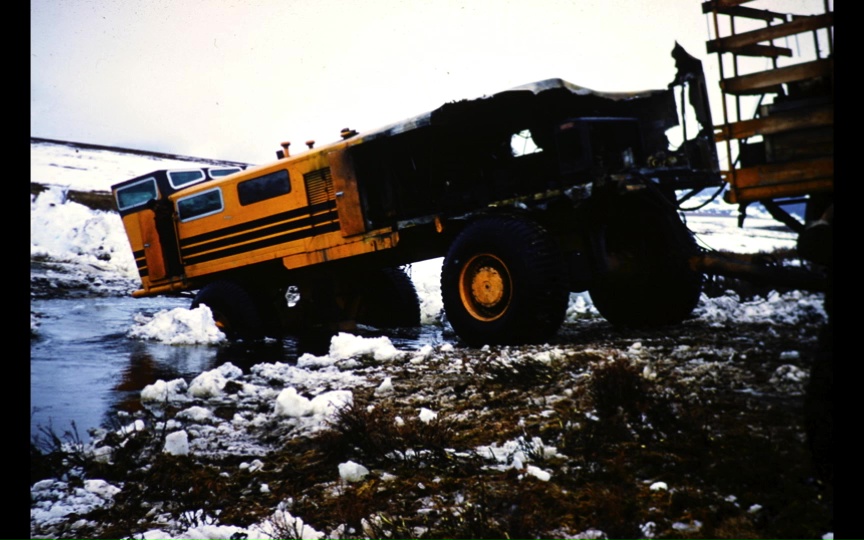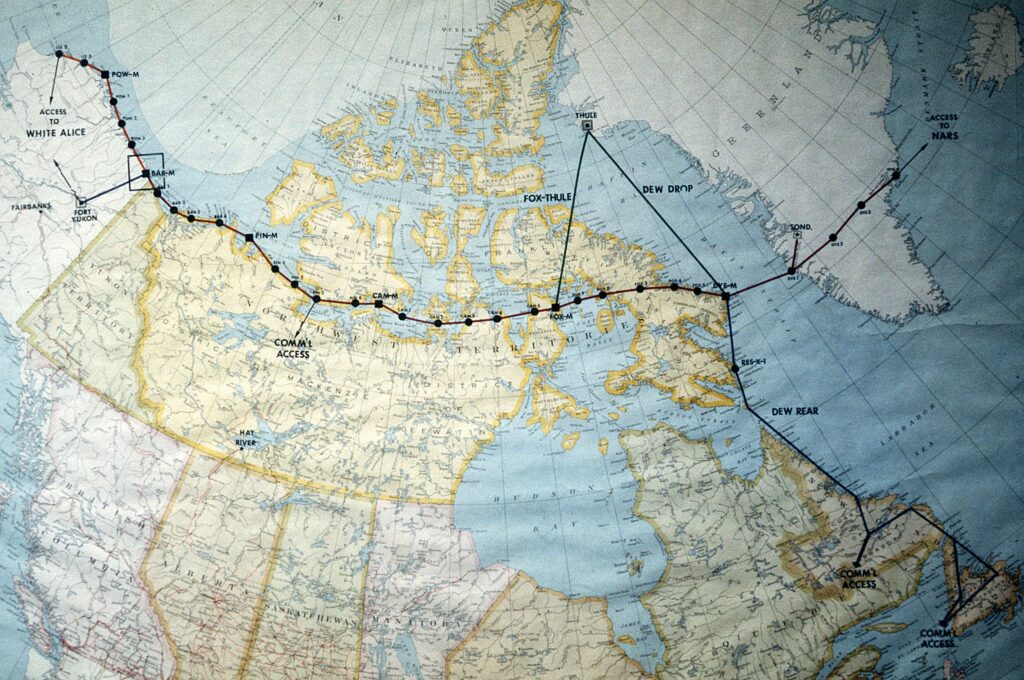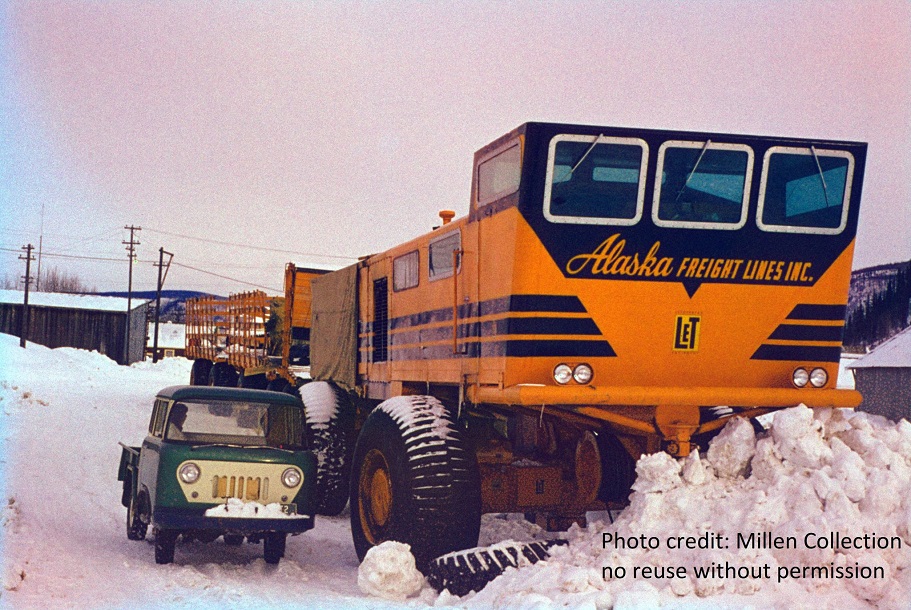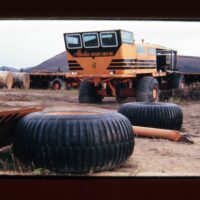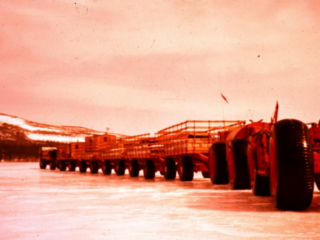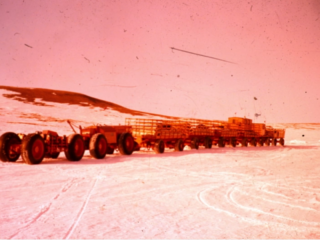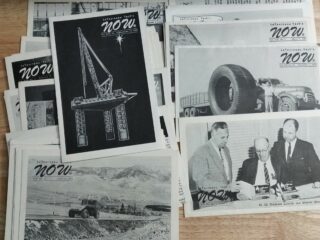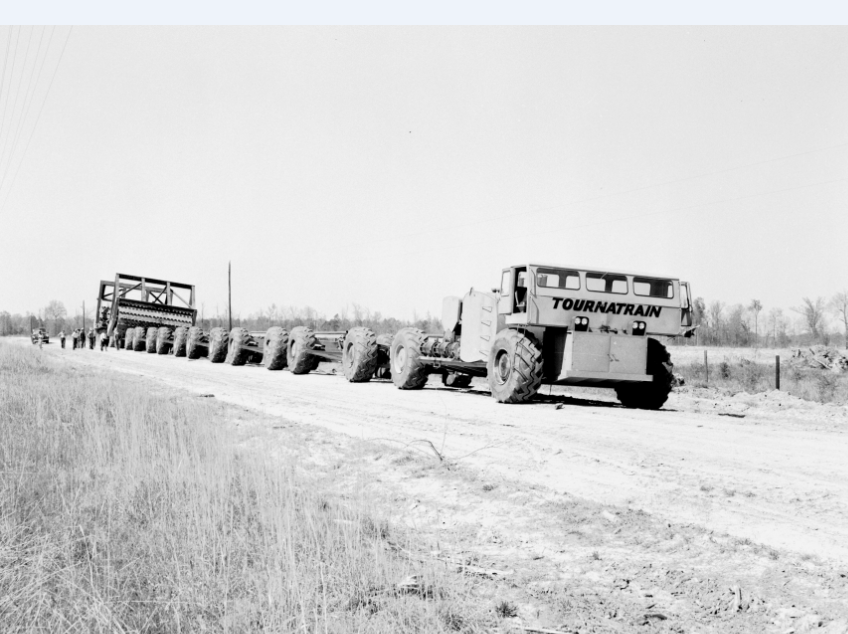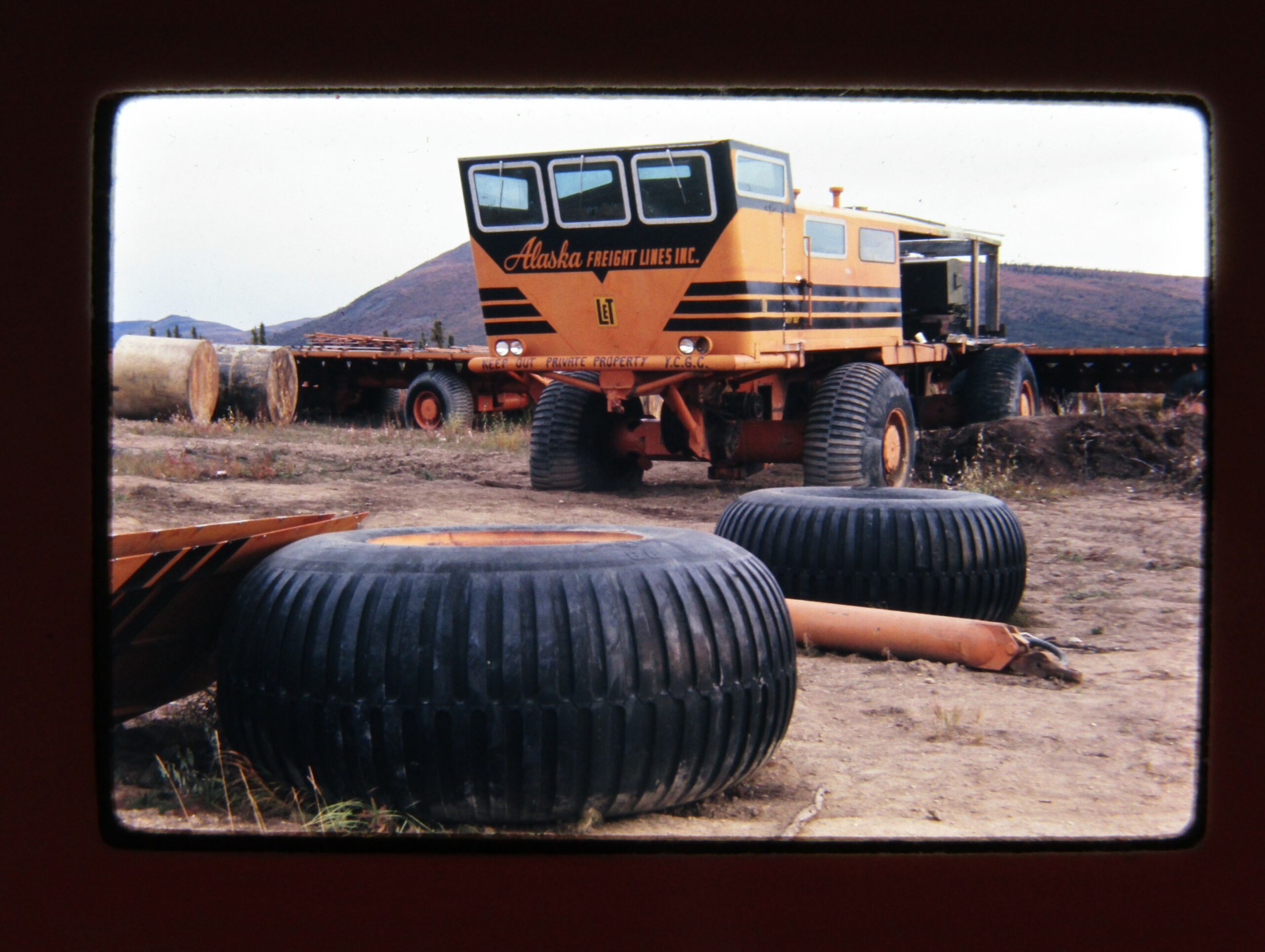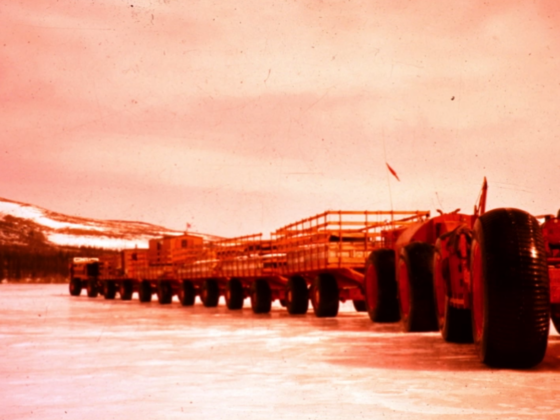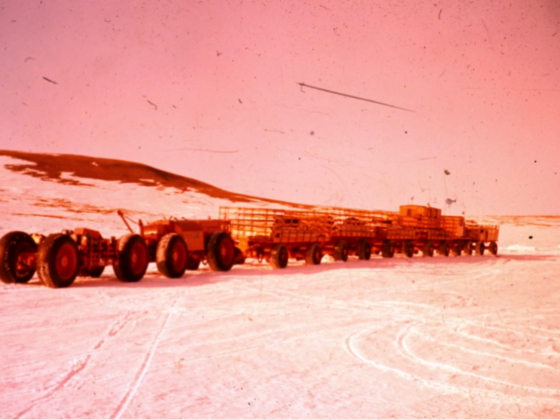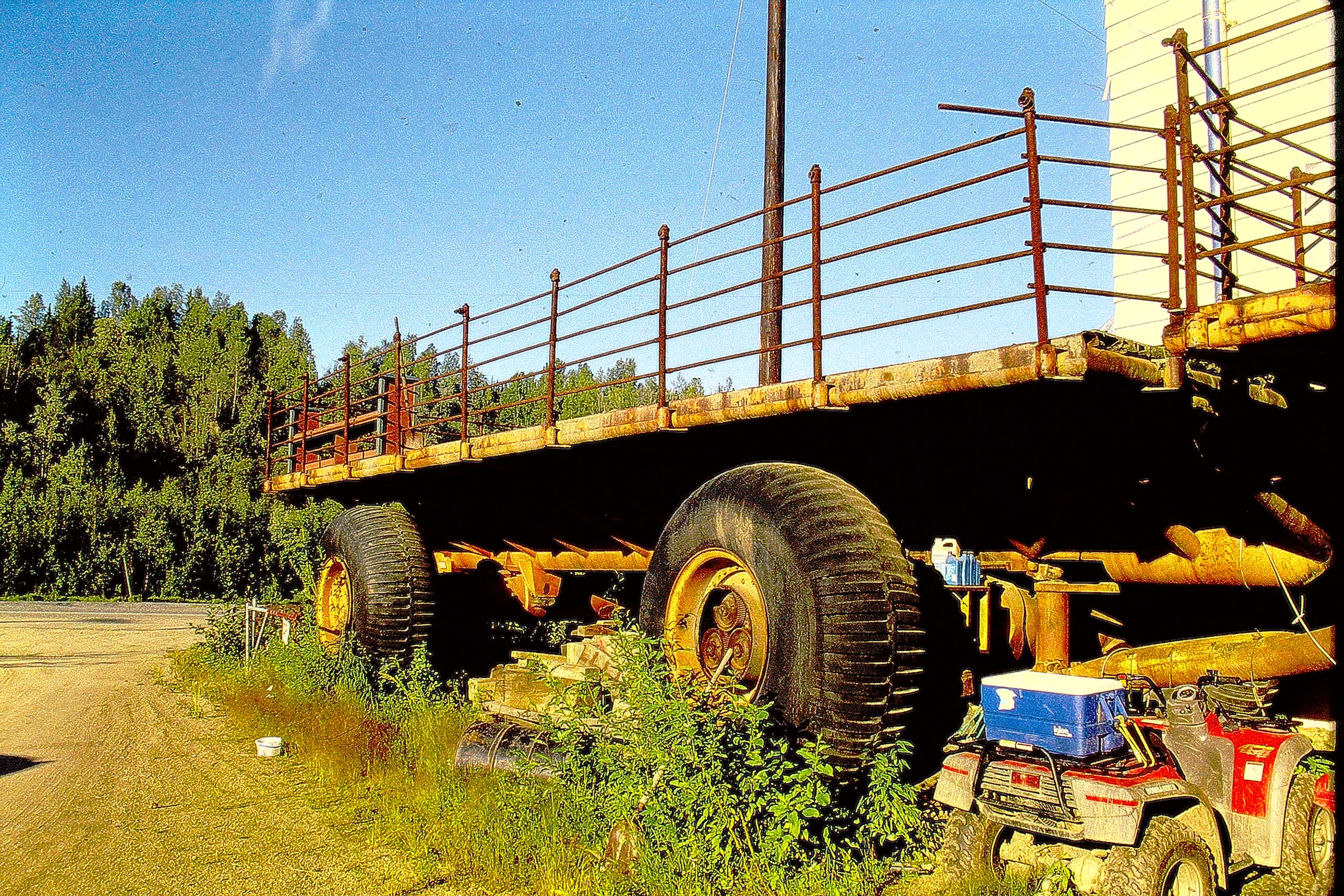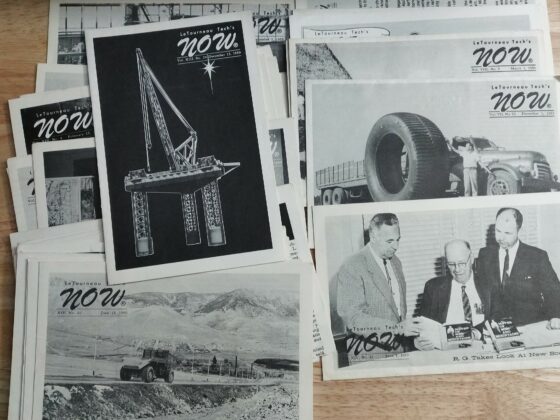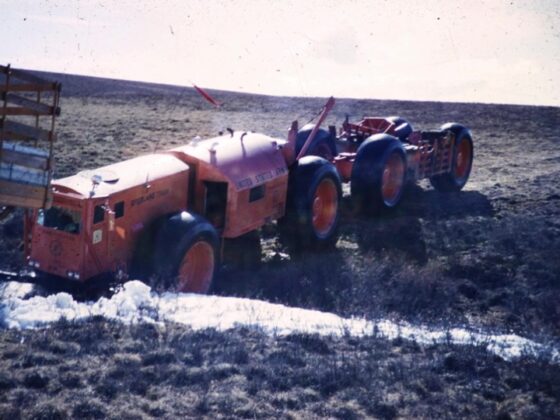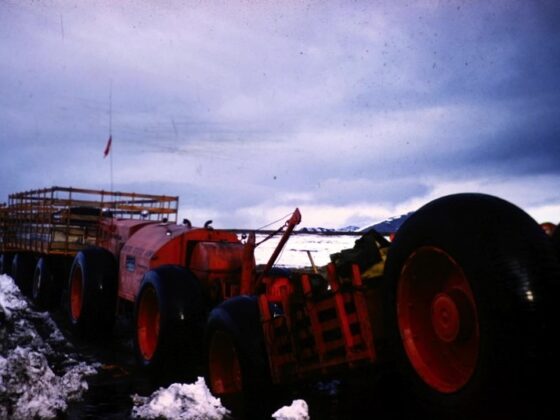The Distant Early Warning (DEW) Line was a line of radar stations spanning from Alaska, Canada, and parts of Greenland. Large quantities of materials were needed to build and resupply these stations. There were a total of 63 remote radar sites. The President of Alaska Freight Lines (AFL) proposed to the government contractor building the DEW Line, that they could haul 500 tons of materials to these stations. As part of the contract, AFL would not be paid until all 500 tons of freight were supplied. In January of 1955, AFL contracted with R.G. LeTourneau, Inc to build the Sno-Freighter to accomplish the resupply contract.
In the spring of 1956, its final supply trip, the Sno-Freighter lost control in the ice and snow and jackknifed. A fire started because of the jackknife, which destroyed it’s ability to transport under it’s own power. Cliff Bishop’s book “18 Wheels North to Alaska: A History of Trucking in Alaska” talks about his efforts to recover the Sno-Freighter from its break down. Fast forward 6 years later.
After a number of years of deteriorating in Canada, the government wanted it out of their territory. The United States Army was sent in to recover the Sno-Freighter in 1962. The images below show the Sno-Freighter as it makes its way from the Yukon Territory to Alaska.
The Sno-Freighter did not have the means to make it out of Canada on its own. As you can see from the image above-left, the entire engine and generator compartment are burnt out. As part of the research on the Overland Trains, I was fortunate to meet and interview the Non-Commissioned Officer in charge of the recovery out of Canada. More on how they did it in my book coming late 2021, early 2022.
